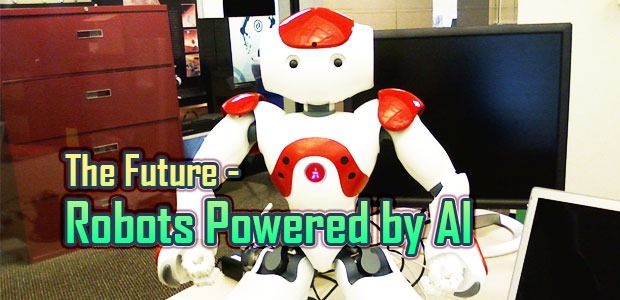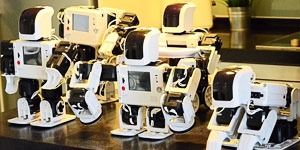Artificial intelligence (AI) and Robotics are headed towards an inevitable marriage of the physical and the logical. As the technology for each advances the are slowly but surely becoming more interwoven into one other. Many think that “robotics” means AI as well but generally that hasn’t been the case. Most robots are built to physically perform a specific function. AI can exist without robotics for example financial planning software or AI chat bots.
AIwill ultimately be the engine that powers robotics to be machines that can perform intelligent flexible tasks instead of specific automated motions. It’s this combination that many are eagerly anticipating and many are worried could lead to the doom of humanity.
Arobot is any form of biomechanical or electromechanical device existing individually or as a group of devices that can perform pre-programmed tasks autonomously. Artificial intelligence in contrast is the algorithmicability of a computer or computer-enabled devices to process simple and complex information and produce goal based. The goal of AI is to perform learning, decision making and problem solving. AI aims to equip a system with problem solving skills similar to the same processes of human logic and reasoning.
 The merging of AI and robotics focuses on several key areas including:
The merging of AI and robotics focuses on several key areas including:
1. Perception –AI enables Robots to observeanalyze data in their environment versus just collecting the data. This data being collected can be processed it into information and consequently transformed into knowledge by the AI. These perception-enabling features that AI brings to robotics enable the robot to be able to interpret data and modify itsphysical behavior accordingly. This perception is made possible with the use several sensors built into therobot. Example sensors includesonar, infrared, laser, and the use of video cameras. These sensors have led to such innovations as face recognition, defect detection and cognitive vision.
Face recognition enables robots to learn and distinguish individuals by facial features. This technology is going to become more mainstream with the Apple iPhone X and subsequent models. Robots with advanced AI can use defect detections to check for authenticity of valuables for example. Perception allows robots to qualitatively recognize objects and shapes and turn them into conceptual representations.
2. Reasoning –A key focus of AI is to emulate human logic and intelligent reasoning. Robots can utilize this reasoning ability to draw relevant conclusions from the perceived data that is obtained in their environment. This reasoning plays an important role in drawing inferences and can affect human-robot and robot to robot interactions. AI currently enablesrobotics in many types of reasoning abilities including logical, probabilistic, fuzzy logic, case-based and qualitative types of reasoning.
3. Learning –With the input of perception and reasoning then the robot can start to learn. The AI system can process the data to obtain conclusions and form short and long term knowledge. Based on this new knowledge the robot can be directed based on consideration of the surrounding environment. It’s this learning for example that allows a robot vacuum to learn the environment of the house its cleaning. This learning from earlier experiences is critical for robots to function in new environmental scenarios. AI uses learning techniques such as inductive learning through semantic networks, probabilistic functions made possible by belief networks and many other AI learning concepts.
4. Decision making – Robots can utilizeAI to make firm draw conclusions after reasoning and learning. Decision making involves the prioritization of actions by the robot to determine its next actions.
5. Interactions – The long-term goal of robotics is to make systems that will interact with humans or with other robot systems in a meaningful way. Understanding human interaction is going to take sophisticated AI algorithms and massive amounts of data being collected by the robotic interfaces. This will include comprehending human language, human expressions and speech nuances as well as the context in which the interactions are taking place. AI will also be required allow the robot to respond to the human.
AI systems can go well beyond just the physical inputs of the robot. In more advanced level AI systems covers many other complex concepts such as advanced learning, deep data pattern recognition and knowledge representation. Machine learning covers aspects such as deductive and inductive learning while the pattern recognition includes speech and visual pattern recognition. Knowledge representation encompasses declarative and procedural knowledge as well. AI can take in massive amounts of data and analyze it. In the long run AI systems could interact with and control large sets of robotic systems.
The science of artificial intelligence arguably plays the most crucial role in developing a truly intelligent and capable robotic systems that can exist independently and autonomously. Robots have definitely had a major impact on industry in terms of productivity, improving human safety and a number of other positive benefits. For robots to advance the next level we only see in science fiction it will require the combination of powerful AI systems with powerful robotics. It will happen the only questions is how soon will it happen.


 The merging of AI and robotics focuses on several key areas including:
The merging of AI and robotics focuses on several key areas including: